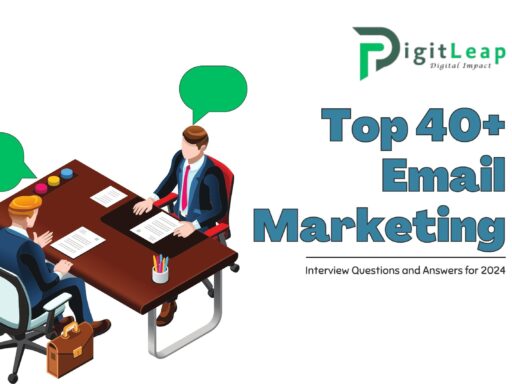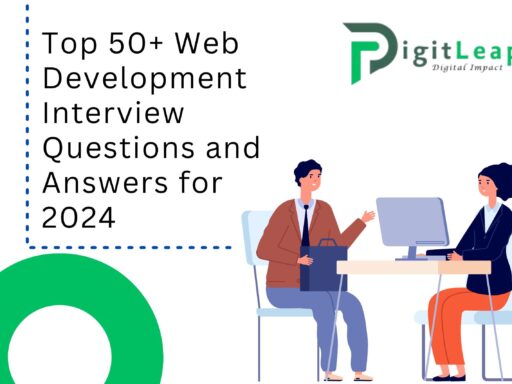Top 50+ Social Media Marketing Interview Questions and Answers for 2025
As social media continues to shape the digital landscape, the role of social media marketers has never been more critical. Employers are on the lookout for professionals who not only understand the mechanics of different platforms but can also craft innovative strategies that drive engagement, build brand awareness, and generate measurable ROI. Whether you’re preparing for an interview or simply looking to brush up on the latest trends, here’s a comprehensive list of over 50 interview questions and sample answers to help you shine in your social media marketing role in 2025.

General Strategy and Trends
- What is social media marketing, and why is it important for businesses today?
Answer: Social media marketing is the practice of using social media platforms to promote products or services, build brand awareness, and engage with customers. It’s essential because it allows businesses to reach a broad audience, build community, and drive conversions through targeted, data-driven campaigns. - How has social media marketing evolved over the past few years?
Answer: Social media marketing has shifted from simple content posting to a complex, integrated approach that combines data analytics, influencer collaborations, video content, and interactive campaigns. In 2025, advanced AI, augmented reality (AR), and live commerce are also playing a significant role in creating engaging experiences. - What trends do you predict for social media marketing in 2025?
Answer: I foresee an increased focus on personalized experiences through AI and machine learning, the rise of immersive technologies like AR/VR for enhanced customer engagement, further integration of social commerce, and a greater emphasis on data privacy and ethical marketing practices. - How do you define success in a social media marketing campaign?
Answer: Success is measured by a combination of metrics, including engagement (likes, shares, comments), reach, click-through rates, conversions, and overall return on investment (ROI). It’s also about how well a campaign builds brand loyalty and contributes to long-term business goals. - Can you explain the role of a social media marketing funnel?
Answer: The social media marketing funnel maps out the customer journey from awareness to conversion. It starts with broad content to attract potential customers, followed by targeted engagement to nurture leads, and finally, conversion-focused content to drive sales or sign-ups. This approach ensures that each stage of the customer journey is addressed with relevant content and strategies.
Content Strategy and Creative Tactics
- How do you develop a content strategy for social media?
Answer: I begin by defining clear objectives, identifying the target audience, and researching the topics that resonate with them. I then create an editorial calendar that includes a mix of content types—such as blog posts, videos, infographics, and interactive content—and align it with key business milestones and trends. - What is your approach to creating engaging social media content?
Answer: I focus on authenticity and storytelling, using visuals and narratives that evoke emotions. Engaging content is interactive and relevant; I incorporate user-generated content, behind-the-scenes looks, and timely topics that connect with the audience on a personal level. - How do you use data to inform your content strategy?
Answer: Data from analytics tools and social listening platforms helps me understand audience behavior, track engagement, and identify trending topics. I use these insights to refine content themes, optimize posting schedules, and measure the effectiveness of different content formats. - How do you stay creative while adhering to brand guidelines?
Answer: Creativity is all about finding unique ways to tell a brand’s story. I brainstorm ideas that align with brand values and then use creative assets—like custom graphics, videos, and innovative copy—to deliver the message. Regular collaboration with creative teams also ensures that ideas are both innovative and consistent with brand identity. - What role does storytelling play in social media marketing?
Answer: Storytelling is vital because it humanizes the brand, builds emotional connections, and makes content more memorable. Effective storytelling in social media can transform a simple product pitch into an engaging narrative that resonates with and inspires the audience.
Platform-Specific Strategies
- How do you tailor your content for different social media platforms?
Answer: Each platform has its unique audience and content format. For example, Instagram is visual-centric, so I focus on high-quality images and short videos, while LinkedIn requires a more professional tone with thought leadership content. Adapting content ensures maximum engagement and relevance across channels. - What strategies do you use for LinkedIn marketing?
Answer: For LinkedIn, I focus on building professional authority by sharing industry insights, case studies, and expert opinions. Engaging in group discussions, publishing long-form articles, and using targeted Sponsored Content also help reach decision-makers and drive business growth. - How do you optimize content for Facebook’s algorithm?
Answer: Facebook rewards engagement, so I create content that encourages comments, shares, and reactions. Using Facebook Live, interactive posts, and timely updates can help boost visibility. I also leverage paid promotions and retargeting strategies to enhance reach and engagement. - What tactics work best for Instagram marketing?
Answer: Instagram thrives on visually appealing and authentic content. I focus on high-quality images, creative Stories, Reels, and interactive elements like polls and questions. Hashtags, influencer collaborations, and user-generated content further boost engagement on the platform. - How do you approach Twitter marketing?
Answer: Twitter is about real-time engagement and concise communication. I use it for quick updates, customer service, and thought leadership. Monitoring trending topics, using relevant hashtags, and engaging with followers through replies and retweets help maintain a vibrant Twitter presence. - What is your strategy for video content on platforms like YouTube and TikTok?
Answer: Video content should be both informative and entertaining. I focus on creating short, engaging videos that highlight key messages, tutorials, or behind-the-scenes insights. Optimizing video titles, descriptions, and tags with relevant keywords is crucial for discoverability.
Advertising and Paid Social
- How do you create effective social media ads?
Answer: Effective social media ads are highly targeted, visually appealing, and have a clear call-to-action (CTA). I start by defining the objective, choose the right ad format for the platform, and craft concise, compelling copy that resonates with the target audience. Testing different creatives and optimizing based on performance data is also key. - What metrics do you track for social media advertising campaigns?
Answer: Key metrics include click-through rates (CTR), conversion rates, cost per click (CPC), return on ad spend (ROAS), engagement rates, and overall impressions. These metrics help evaluate the ad’s performance and guide optimization efforts. - How do you use retargeting in social media advertising?
Answer: Retargeting involves serving ads to users who have previously interacted with your brand. It’s a powerful tactic for recapturing interest and guiding potential customers down the conversion funnel. I set up retargeting campaigns to re-engage website visitors, abandoned cart users, and past customers with tailored offers. - What is the importance of A/B testing in social media ads?
Answer: A/B testing helps identify which ad elements—such as images, headlines, or CTAs—perform best with your audience. By testing variations, you can optimize ads for higher engagement and better conversion rates, ensuring that every dollar spent is driving maximum results.
Tools and Analytics
- Which tools do you use to monitor social media performance?
Answer: I use a combination of native analytics (like Facebook Insights, Twitter Analytics, and LinkedIn Analytics) and third-party tools such as Hootsuite, Sprout Social, and Google Analytics. These platforms help track engagement, monitor trends, and measure campaign effectiveness. - How do you measure the ROI of your social media marketing efforts?
Answer: ROI is measured by tracking key performance indicators (KPIs) such as conversion rates, customer acquisition costs, and revenue generated from social campaigns. Integrating analytics data with CRM systems provides a holistic view of how social media contributes to overall business growth. - How do you perform competitor analysis on social media?
Answer: I analyze competitors by monitoring their engagement levels, content strategies, and ad campaigns using tools like Social Blade, BuzzSumo, and SEMrush. Understanding their strengths and weaknesses helps me identify opportunities and refine my own strategy. - What role does social listening play in your strategy?
Answer: Social listening involves monitoring social media conversations about your brand, competitors, and industry trends. It provides valuable insights into customer sentiment, emerging trends, and potential issues, enabling proactive adjustments to campaigns and messaging. - How do you track and analyze campaign performance across multiple platforms?
Answer: I use integrated reporting tools that consolidate data from different platforms into a single dashboard. This enables me to compare performance metrics, identify trends, and make data-driven decisions across all social channels.
Content Distribution and Engagement
- What strategies do you use to increase social media engagement?
Answer: Engagement is increased by creating interactive content, such as polls, quizzes, and live videos. Consistent posting, responding to comments, and encouraging user-generated content are also key strategies. Engaging storytelling and visuals help capture and retain audience interest. - How do you ensure your content resonates with your target audience?
Answer: I tailor content based on audience demographics, interests, and behaviors. Using insights from social listening and performance analytics, I refine messaging to align with audience preferences, ensuring that content is both relevant and engaging. - What is the importance of a content calendar in social media marketing?
Answer: A content calendar helps plan and organize posts in advance, ensuring consistent messaging and timely content delivery. It allows for strategic planning around product launches, events, and seasonal trends, which leads to a more cohesive and effective social media presence. - How do you balance promotional content with engaging content?
Answer: The key is to maintain a healthy mix. While promotional content is necessary to drive conversions, engaging content builds relationships and trust. I aim for a ratio where the majority of posts provide value or entertainment, with occasional promotional posts that drive specific actions. - What tactics do you use for community management on social media?
Answer: Community management involves actively engaging with followers by responding to comments, participating in conversations, and addressing concerns promptly. I use scheduling tools to maintain consistent interaction and monitor brand mentions to ensure a positive online presence.
Strategic and Theoretical Questions
- How do you develop a comprehensive social media strategy?
Answer: A comprehensive strategy starts with clearly defined goals, in-depth audience research, and competitive analysis. It includes a content plan, distribution strategy, budget allocation, and key performance indicators (KPIs) to measure success. Regular review and adjustments based on data are critical for staying on track. - What is the role of influencer marketing in your social media strategy?
Answer: Influencer marketing leverages the credibility and reach of influencers to amplify your message. It’s an effective way to build trust, expand your audience, and drive engagement by collaborating with individuals who align with your brand values and have an engaged following. - How do you approach crisis management on social media?
Answer: Crisis management involves monitoring social media for negative sentiment, responding quickly and empathetically, and taking corrective action to address the issue. A predefined crisis plan, clear communication, and transparency are key to mitigating damage and restoring trust. - How do you ensure alignment between social media campaigns and overall business goals?
Answer: Alignment is achieved by setting clear objectives that tie back to broader business goals. Regular cross-departmental meetings, integrated reporting, and data-driven reviews help ensure that social media efforts contribute to overall marketing and business strategies. - What are some ethical considerations in social media marketing?
Answer: Ethical considerations include transparency, respecting user privacy, avoiding misleading information, and ensuring that sponsored content is clearly disclosed. Adhering to ethical standards builds trust with your audience and maintains the integrity of your brand. - How do you measure social media sentiment and why is it important?
Answer: Social media sentiment is measured using social listening tools that analyze the tone of mentions, comments, and discussions around your brand. It’s important because it provides insights into public perception, allowing you to adjust strategies to improve brand reputation and engagement. - What is the significance of storytelling in social media, and how do you implement it?
Answer: Storytelling helps humanize your brand and create an emotional connection with your audience. I implement storytelling by sharing authentic brand narratives, customer success stories, and behind-the-scenes content that resonates with the audience’s experiences and aspirations. - How do you handle multi-channel social media campaigns?
Answer: Multi-channel campaigns require cohesive messaging and tailored content for each platform. I use integrated tools to manage and schedule posts, monitor performance across channels, and ensure that each platform’s unique audience receives content optimized for their preferences. - What role does video content play in social media marketing today?
Answer: Video content is a highly engaging medium that captures attention quickly. It’s effective for storytelling, product demonstrations, and live interactions. With platforms like TikTok, YouTube, and Instagram Reels, video is central to driving engagement and conversions. - How do you optimize your social media content for search engines?
Answer: Optimizing social media content for search engines involves using relevant keywords, crafting engaging descriptions, and leveraging hashtags. Consistent posting and high-quality content also contribute to improved search visibility, driving more organic traffic to your profiles. - What are some ways to repurpose content across social media platforms?
Answer: Repurposing content involves adapting a single piece of content into various formats. For example, a blog post can be turned into an infographic, a series of social media posts, or a short video. This maximizes content value, maintains consistency, and reaches different audience segments. - How do you handle negative feedback or comments on social media?
Answer: Negative feedback is addressed promptly and professionally. I respond empathetically, offer solutions or ask for more information to resolve the issue, and take the conversation offline when necessary. This approach helps maintain a positive brand image and builds trust with the audience. - What role do social media analytics play in your strategy?
Answer: Analytics are crucial for understanding performance, audience behavior, and engagement trends. They provide actionable insights that inform strategy adjustments, help identify successful tactics, and guide future campaign planning. - How do you manage social media advertising budgets effectively?
Answer: Effective budget management involves setting clear objectives, closely monitoring ad spend, and adjusting bids based on performance data. I also use A/B testing to identify the most cost-effective strategies and continuously optimize campaigns to maximize ROI. - What are the benefits of using social media management tools?
Answer: Social media management tools help streamline scheduling, monitoring, and reporting across multiple platforms. They save time, ensure consistency in posting, and provide comprehensive analytics to guide strategic decisions. - How do you approach cross-promotion between social media channels?
Answer: Cross-promotion involves sharing content in a way that complements each platform’s strengths. For example, promoting a YouTube video on Twitter with engaging snippets or encouraging Instagram followers to join a Facebook group. This creates a unified brand experience and broadens reach. - What strategies do you use to boost engagement on new social media platforms?
Answer: When exploring new platforms, I start by researching the unique audience demographics and content formats. I then create tailored content that aligns with platform norms, engage with early adopters, and use paid promotions if necessary to gain traction. - How do you ensure your social media content remains compliant with regulations?
Answer: I stay updated on the latest regulatory guidelines, such as GDPR and local advertising laws. Regular training, clear disclosure of sponsored content, and thorough review processes help ensure that all social media activities are compliant. - What are some innovative social media strategies you’ve implemented recently?
Answer: Recently, I integrated augmented reality (AR) filters on Instagram to enhance product engagement, launched interactive live sessions for customer Q&A, and utilized AI-driven content personalization to tailor messaging for specific audience segments, leading to a noticeable boost in engagement and conversions. - How do you keep up with the ever-changing social media landscape?
Answer: Continuous learning is key. I follow industry blogs, participate in webinars and conferences, engage with professional communities on LinkedIn, and experiment with new tools and features as they emerge. This proactive approach helps me stay ahead of trends and adapt strategies accordingly. - How do you use user-generated content (UGC) in your social media campaigns?
Answer: UGC adds authenticity and trust to a brand. I encourage customers to share their experiences through hashtags and contests, then feature the best submissions on our official channels. This not only boosts engagement but also builds a sense of community around the brand. - What is your approach to social media influencer marketing?
Answer: My approach involves identifying influencers whose values align with the brand, negotiating clear partnership terms, and creating campaigns that allow influencers creative freedom while still conveying the brand’s message. This strategy helps tap into the influencer’s loyal audience and drives authentic engagement.
Conclusion
These 52 questions and answers cover a wide range of topics that are vital for mastering social media marketing in 2025. Whether you’re discussing strategy, content creation, analytics, or emerging trends, being well-prepared with thoughtful, data-driven responses will set you apart in any interview. Use these insights to build your confidence and demonstrate your expertise in navigating the ever-evolving world of social media marketing.






